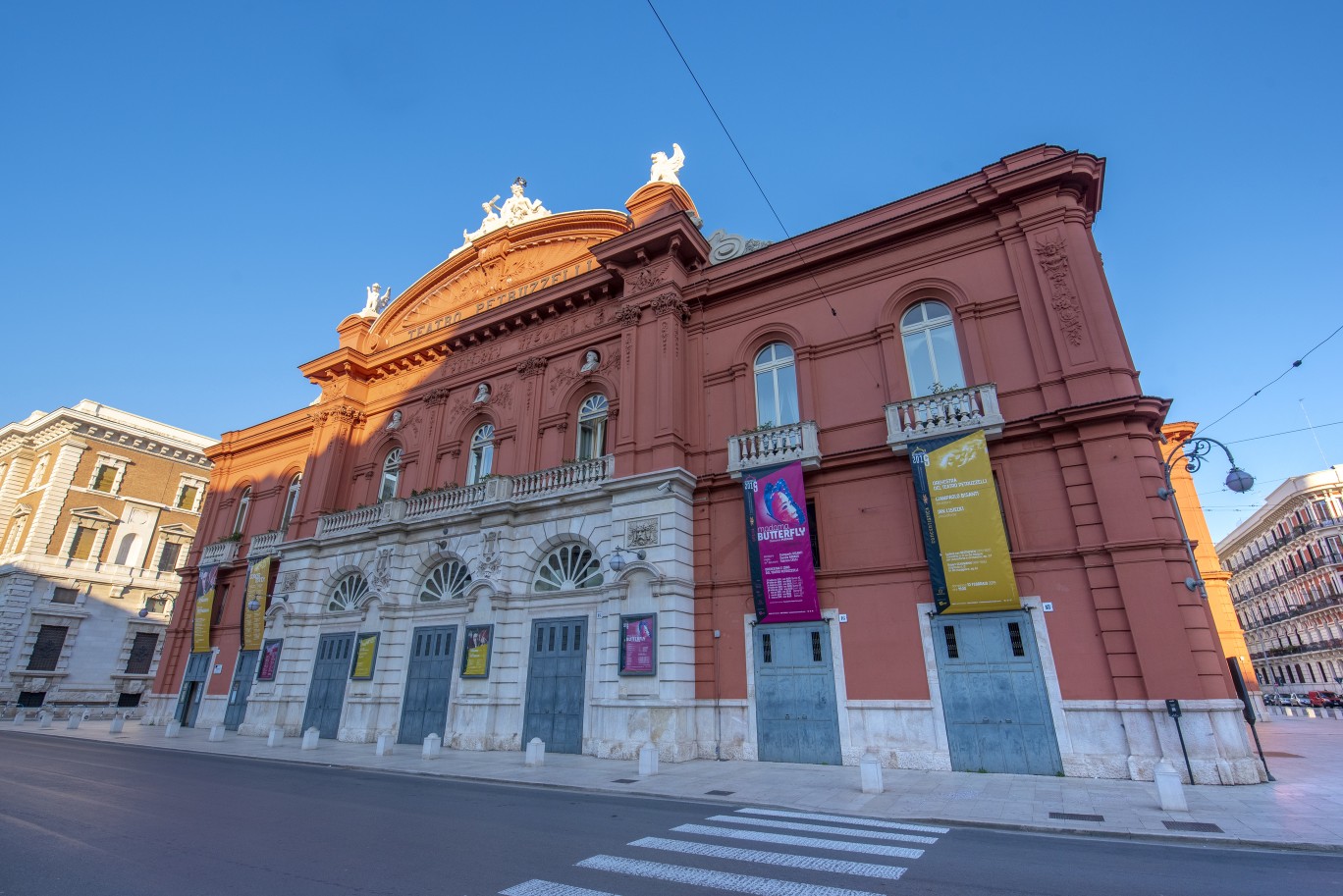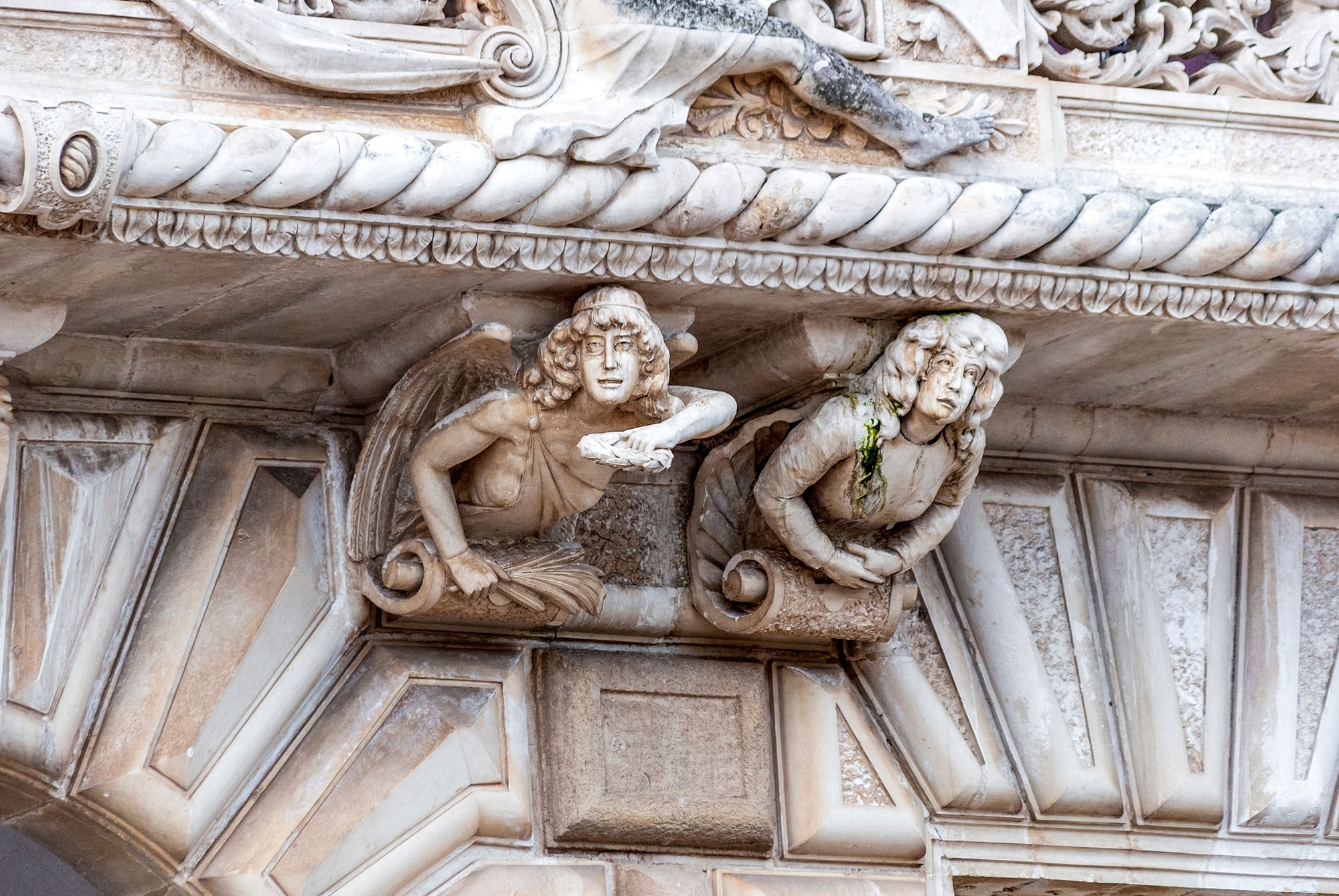The Petruzzelli Theater in Bari is the fourth-largest opera house in Italy and one of the most important, with La Scala in Milan, La Fenice in Venice, the Regio in Turin, the San Carlo in Naples and the Massimo in Palermo.
The project for the theater was presented by the Petruzzelli brothers, Onofrio and Antonio, to their brother-in-law Angelo Messeni, engineer for Bari City Council and husband to their sister Maria, in 1896. Construction, however, started only two years later, in 1898. The building, which is located at the very heart of Bari, in Via Camillo Benso Conte di Cavour, was completed in 1903 and the first opera represented was Giacomo Meyrbeer’s Gli Ugonotti, on the 14th of February of the same year.
For the times, it was quite a modern theater, with central heating and electricity, as well as an incredibly beautiful dome, frescoed by Raffaele Armenise. In 1954, it was declared a Monumento di Interesse Storico e Artistico, thus protected by law. In 1973, the continuous quality of its programs and of the artists who had been performing on its stage made it a Teatro di Tradizione.
In 1991, it was almost fully destroyed by a fire. After almost 20 years of reconstruction, with funding coming from the State and the EU, the Petruzzelli Theater reopened in 2009, on the 4th of October with a performance of Beethoven’s Ninth Symphony by the Orchestra della Provincia di Bari. The first opera lirica performed after the new inauguration was Puccini’s Turandot. The “new” Petruzzelli has 1,482 seats, 450 in the audience and 1,032 along 6 balcony levels, improved acoustics and, you could bet on it, a state-of-the-art anti-fire system. The original theater could host 3,500 people.
Theaters, everyone knows, are mysterious and curious places, with their own stories and anecdotes, legends and, indeed, ghosts: the Petruzzelli is no different. One of the most famous tales associated with it is directly connected to the night of the 27th of October 1991, when a raging fire almost erased the theater from the face of the Earth. That evening, Vincenzo Bellini’s Norma was staged, ending only a handful of hours before the tragedy took place: opera lovers know well how the ending of the opera revolves around fire, with Norma walking into the pyre where her lover is burned, a bitter coincidence that many Baresi noticed.
While opera and symphonic music are more its thing, the Petruzzelli also has a penchant for cinema: for instance, its foyer, which is the only area of the original building that survived the 1991 fire, was the backdrop for Franco Zeffirelli’s Il Giovane Toscanini (1988), where it was transformed into the grand hall of a ship. Fifteen years earlier, Italian cinema stars Alberto Sordi and Monica Vitti, protagonists of Polvere di Stelle as husband and wife, portrayed their characters’ acting dreams on its stage.

But there are also more mysterious anecdotes about this beautiful theater. For instance, it seems that there was a secret chamber, which went destroyed – again – during the 1991 fire. The revelation came during an Italian TV show, Voyager, dedicated to history, art and sciences. In a special episode entirely dedicated to the Petruzzelli Theater, former head engineer Antonio Manzari told the host, journalist Roberto Giacobbo, how he found out about it. Manzari said he had heard about a mysterious closet with a hidden door, which he found by probing the wall with his hands. When he entered the room, he found it full of furniture and objects, including swords and helmets and documents, some of them signed by Benito Mussolini and King Vittorio Emanuele III. Unfortunately, we will never know whether Manzari’s tale was true or not because everything inside the room was incinerated during the fire.
As every theater should, the Petruzzelli has got its own ghost, too. It’s the restless spirit of a young American Marine who had come to Italy during the Second World War and tragically killed himself inside the theater. Apparently, he is still roaming the area between the stage, the orchestra pit and the audience.
Secrets and ghosts are good, but the greatest mystery of the Petruzzelli Theater remains the fire that burned it almost to the ground in 1991. Because it was arson, and because it had been done on commission, but no one has been charged, in more than 30 years. Luckily the theater was reborn, quite literally, from its ashes, even if it was a long and difficult journey, with works being often halted because of police investigations and financial issues.

Baresi are happy to say, today, that their beloved Petruzzelli, with all its secrets, mysteries and ghosts, is back. The 2023 season includes operas such as Verdi’s Otello, Puccini’s Turandot and La Bohème, Wagner’s Tannhäuser, ballet performances of Tchaikovsky’s Swan Lake and orchestra performances of works by Mozart, Debussy, Stravinsky, Beethoven, Schumann, Vivaldi and Handel.






























